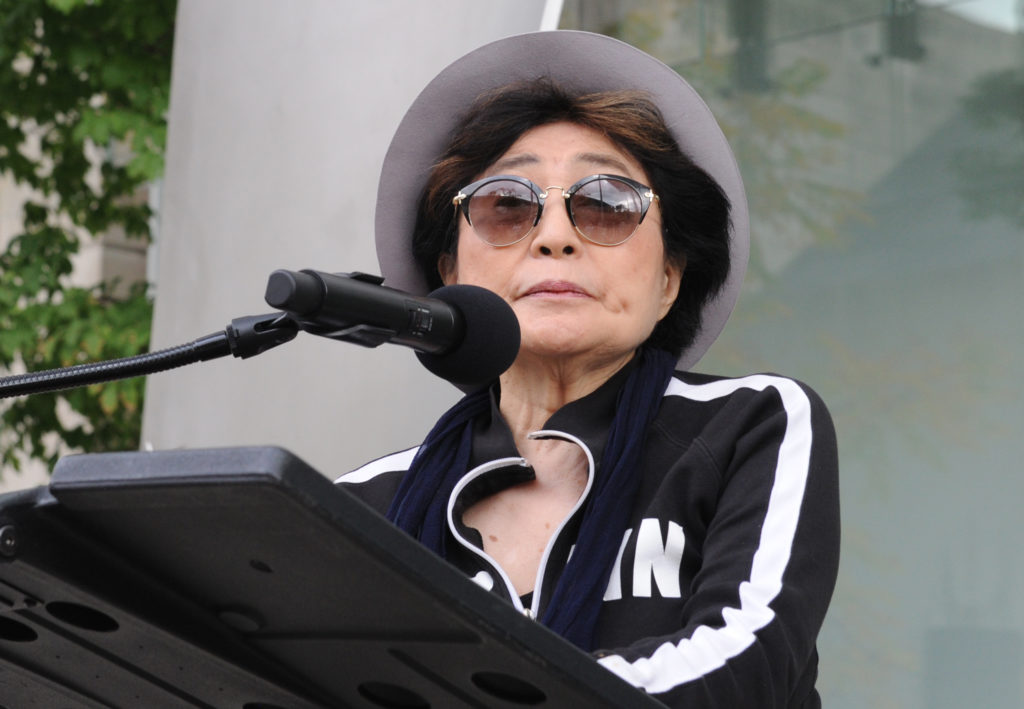People
Yoko Ono Unveils First Permanent US Sculpture in Chicago’s Jackson Park
It's a significant location, as Chicago inspired the last song she and Lennon wrote together.

It's a significant location, as Chicago inspired the last song she and Lennon wrote together.

Chloe Leonida

On Monday, Yoko Ono unveiled her first permanent US installation, a sculpture named Skylanding, comprising 12 stainless steel petals, each standing at a height of 12 feet.
The piece is permanently located in Jackson Park, the future home of the Barack Obama presidential library, highlighting the park on the South Side of Chicago as a hotspot for cultural significance.
“The lotus represents hope, rebirth and spiritual awakening. Soon after I first visited the site in 2013, I began to imagine such a lotus rising from the ashes of the lost Phoenix. Today, I see the lotus as a universal symbol of peace and embodiment of all of our greatest hopes and aspirations,” Ono told the Chicago Tribune.
The significance of this particular artwork is in part due to its location, Chicago being the inspiration of the last song she and John Lennon wrote together, Walking on Thin Ice, before his death in 1980.
The work sits at the entrance to the Garden of the Phoenix, a Japanese garden within Jackson Park that once housed the Phoenix Pavilion, a gift from Japan to the United States during the 1893 World’s Fair.
Skylanding has a sibling piece on display at the Art Institute of Chicago, where one steel lotus petal, titled Mended Petal, is currently being exhibited at the Institute’s Pritzker Garden.
Ono, a native of Japan, explores the themes of peace and reconciliation within her work, and this recent project is no exception. “She understands the significance of the [Phoenix Pavilion] as this historical locus for Japan-US relations,” Janice Katz, curator of Japanese art at The Art Institute, told the South China Morning Post.
It is symbolic of Ono’s ongoing campaign for peace that Skylanding is situated so close to where the pavilion was burned down in 1946. According to her recent interview with the Chicago Tribune, part of her inspiration for creating the piece was her recollection of being in Tokyo in 1945, when American bombs started to fall on the city.
“Since then, all my life, I have been in love with the sky. Even when everything was falling apart around me, through love and loss, the sky has always been there for me,” Ono said.